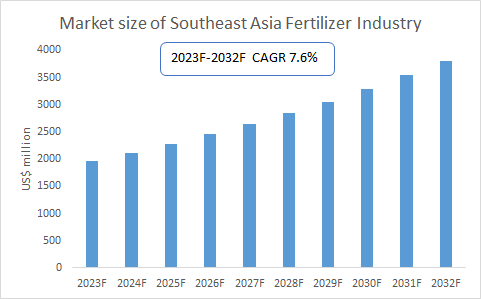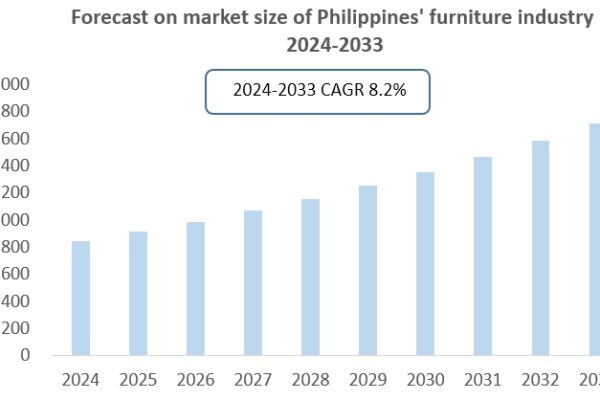Global Smart Agriculture Market
The growing advancements in agricultural technology globally and rising automation in the agricultural industry drive the agriculture industry. In addition, the rise in corporate farming and supportive government initiatives to aid the agriculture industry’s growth are also expected to foster smart agriculture market development. On the other hand, the high cost of advanced agricultural equipment and the dearth of skilled operators are anticipated to hinder the market growth. However, the usage of drones is revolutionizing the agro sector and the growing popularity of vertical farming are expected to provide the market with growth opportunities.
Global smart agriculture market is forecasted to register growth at a CAGR of 10.35% in the projected period from 2022 to 2028.
GLOBAL SMART AGRICULTURE MARKET 2022-2028
North America Smart Agriculture Market
According to the United States Department of Agriculture (USDA) Economic Research Service’s survey, the country had 2.01 million farms as of 2021, with 895 million acres of farmland and an average farm size of 445 acres. The USDA is focusing on enhancing the country’s agricultural production by 40% and reducing damaging environmental impact by 50% by the year 2050.
Further, the United States’ government announced its sustainable agriculture strategy in October 2021. The USDA announced its investment in the NIFA Sustainable Agriculture System program, under which, sustainable agriculture research projects worth nearly $146 million would be implemented to develop and enhance the climate-smart food and agriculture system in the country.
The agriculture and agri-food sector contributes majorly to the Canadian economy. It contributed $134.9 billion (around 6.8%) to the national GDP. Currently, there are 189,874 farms in Canada, and they cover 62.2 million hectares (or 6.3%) of its land area.
The federal, provincial, and territorial governments launched the Canadian Agricultural Partnership in 2018, which is a $3 billion-worth five-year investment program to strengthen and develop the country’s agriculture and agri-food sector. Further, in May 2022, the national government announced its plans to invest $860,000 in 6 businesses, as part of the Innovative Solutions Canada (ISC) program. All these factors are indicative of a bright future for the smart agriculture market in North America.
North America’s smart agriculture market is likely to develop with a CAGR of 9.51% in the forecast period from 2022 to 2028.
NORTH AMERICA SMART AGRICULTURE MARKET 2022-2028
Middle East and Africa Smart Agriculture Market
Saudi Arabia’s tech sector is growing rapidly, and in view of this, the nation plans to diversify its economy from fossil fuels. This is likely to increase agricultural exports, which would be a major driving factor for the smart agriculture market. Also, data science and data analytics are the major technologies bolstering the nation’s agro-technology sector.
Data science plays a vital role in the agricultural sector in terms of monitoring irrigation levels, crop yield, and other verticals of smart agriculture. Further, according to industry sources, Saudi Arabia spent $33 billion on ICT equipment in 2021, which is expected to boost the agritech sector. All these factors present positive prospects for the growth of the studied market in the years to come.
Being a water-poor country, Egypt has adopted smart irrigation techniques as part of its 20-year plan to tackle water shortage. Its Ministry of Water Resources and Irrigation collaborated with Cairo MSA University to develop a smart sensor system to measure and monitor soil moisture via smartphones to aid in precise irrigation.
Whereas, in Lebanon, agro-based startups, such as Ground Vertical Farming and Robinson Agri, have implemented smart irrigation solutions across the country to drive the adoption of IoT-based smart solutions. These developments indicate positive growth for the smart agriculture market in Rest of Middle East & Africa.
Middle East and Africa smart agriculture market is likely to observe growth, with a CAGR of 10.64% in the forecast years from 2022 to 2028.
MIDDLE EAST AND AFRICA SMART AGRICULTURE MARKET 2022-2028
Agriculture Drones and Robots Market
Owing to the growing demand for food and grains, the growth in the global agriculture drones and robots market is expected to be driven by the increasing adoption of digital and smart agriculture equipment and technologies.
The global agriculture drones and robots market was valued at $5.37 billion in 2021, which is expected to grow with a CAGR of 20.74% and reach $16.12 billion by 2027.
Agriculture Drones and Robots Market – A Global and Regional Analysis: Focus on Agriculture Drones and Robots Product and Application, Supply Chain Analysis, and Country Analysis – Analysis and Forecast, 2022-2027
Global Agriculture Drones and Robots Market
• In July 2022, Syngenta’s subsidiary in India, Syngenta India announced to launch two agricultural drones for Indian farmers. These drones are useful for spraying fungicide and insecticide.
• In January 2022, YANMAR HOLDINGS CO., Ltd. unveiled the YV01 autonomous spraying robot for use in vineyards. The YV01’s electrostatic spraying mechanism is flexible, lightweight, and environmentally friendly, which ensures extremely accurate spraying on vines.
• In January 2022, KUBOTA Corporation established its new distribution center in California. The company set up a new research and development and innovation center in the U.S. The expansion aims to develop advancements in data-driven agriculture based on AI and smart technologies to develop autonomous robots.
• In May 2022, Adani Enterprises acquired a 50% stake in General Aeronautics Pvt. Ltd. This acquisition would aid the company in expanding their market reach in the global drone industry.
• In August 2022, Garuda Aerospace announced a partnership with Harare Institute of Technology and Nyangani Virtual University, Zimbabwe to deploy drones for agriculture purposes. These drones would be used for inspection, mapping, and training for better yield.
Agriculture Drones and Robots Market to Reach $16.12 Billion by 2027







Leave a Reply